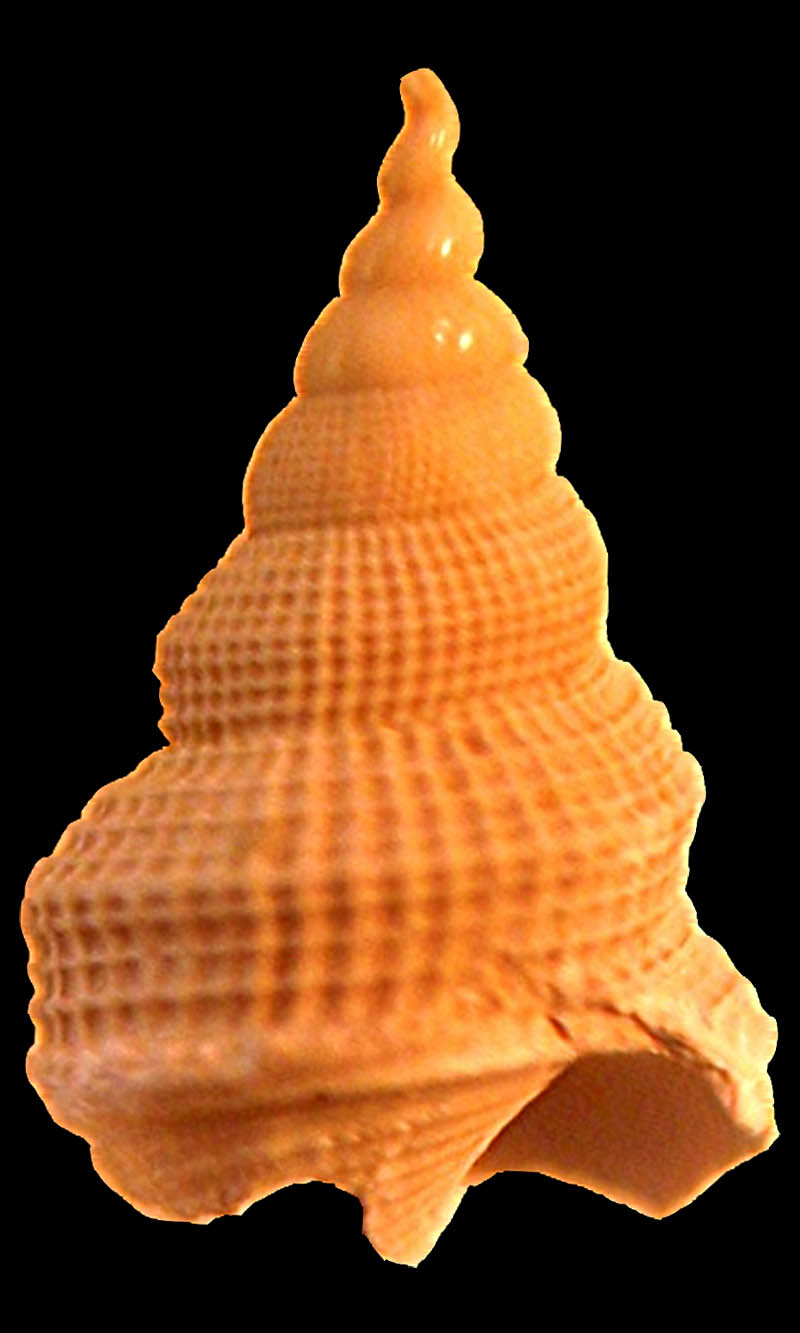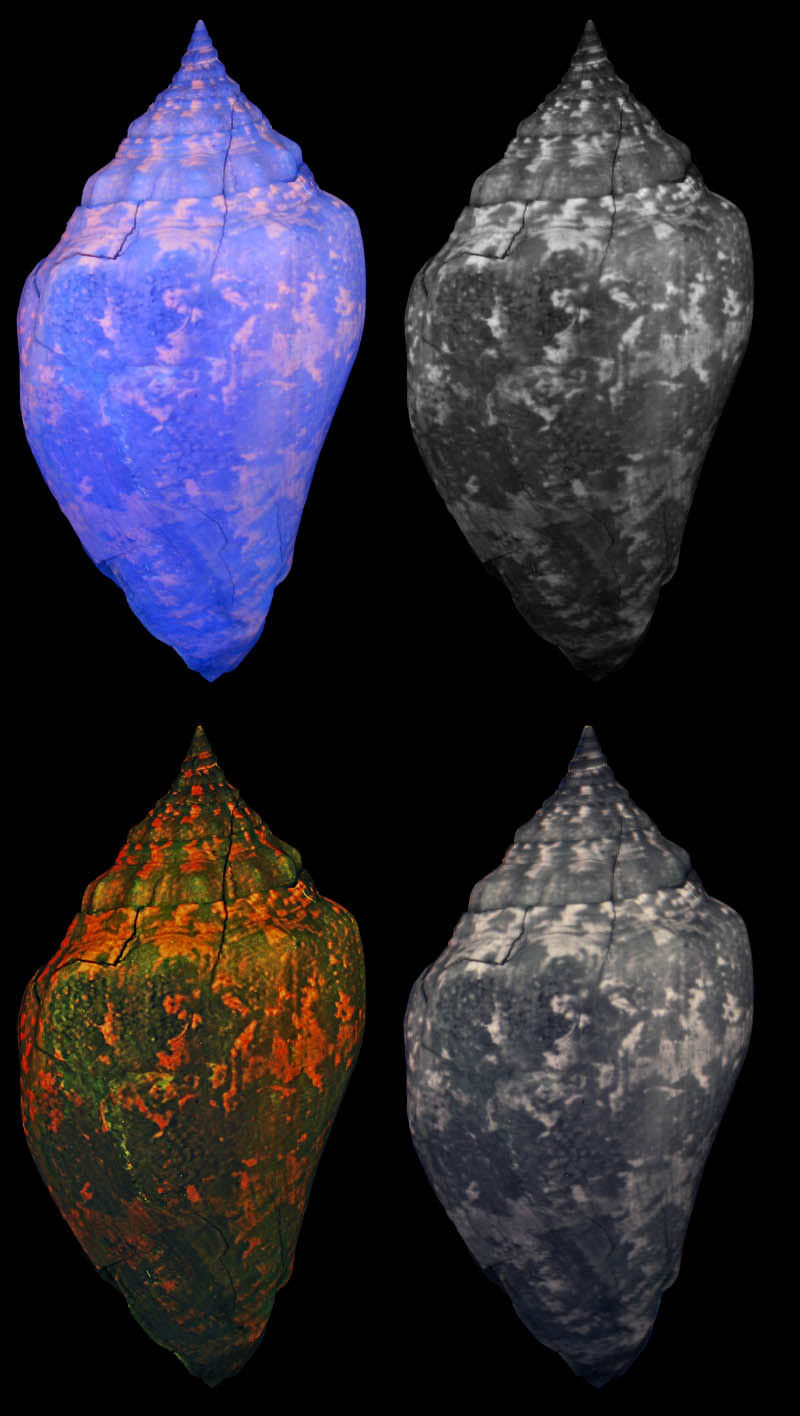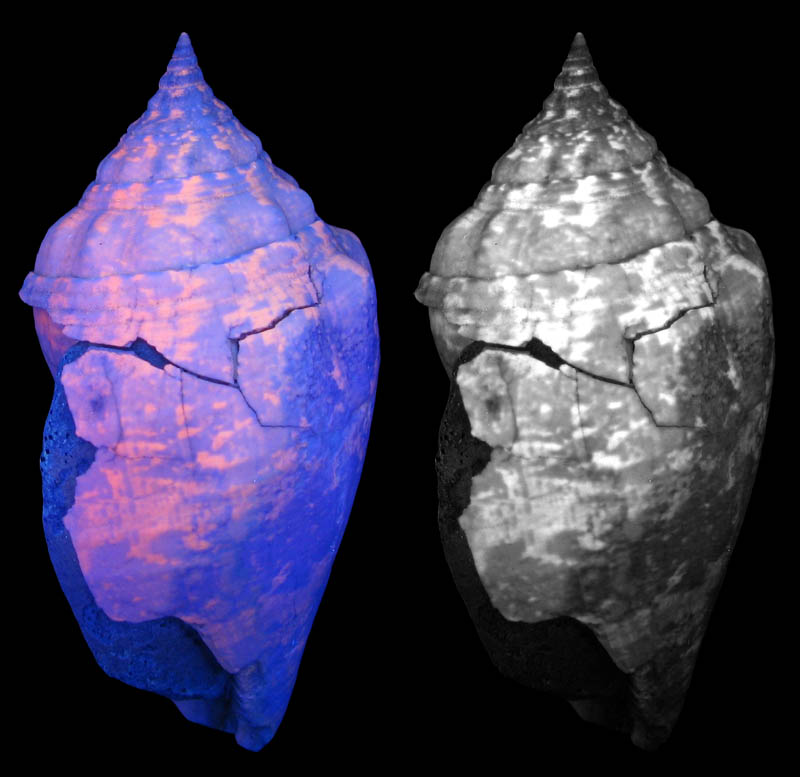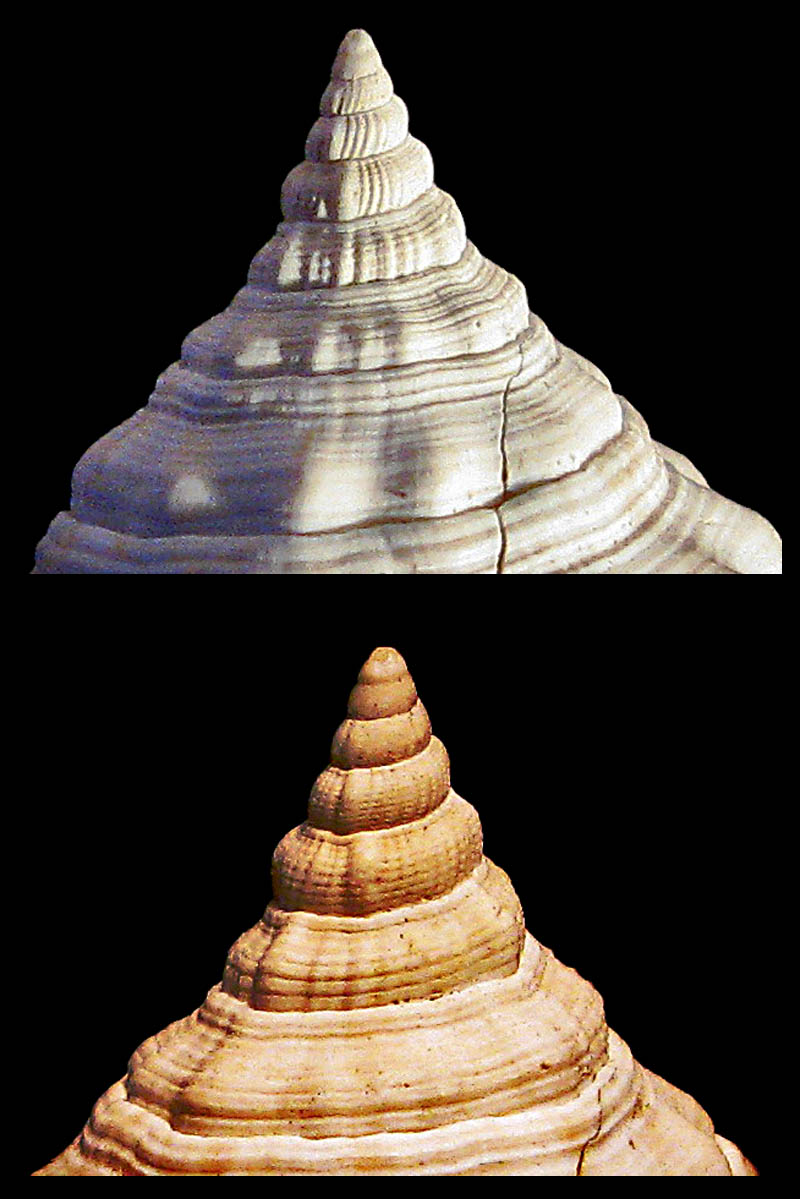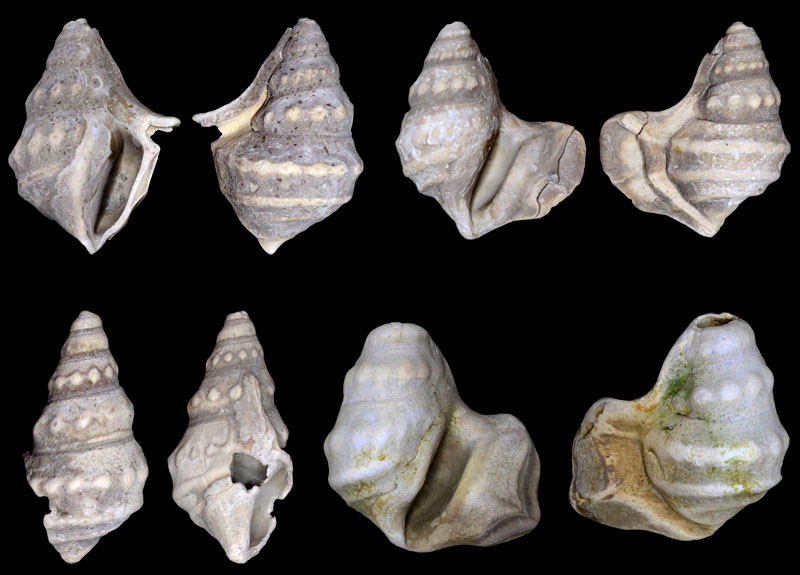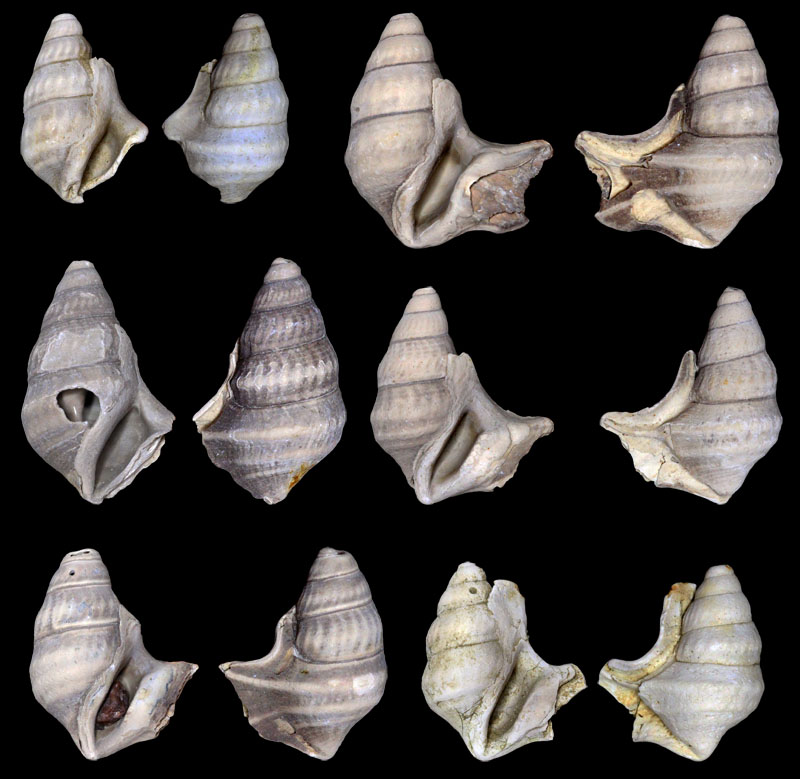Jaap van der Voort
Report by Jaap van der Voort about Aporrhais dingdenensis Marquet, Grigis & Landau, 2002:
- "During an excavation in the fossiliferous Miste bed (Miocene, Hemmoorian, Breda Formation) near the village of Miste near Winterswijk (The Netherlands) in September 2004, the undermentioned collector Jaap van der Voort found a very unusual and large concretion containing hundreds of specimens of Aporrhais dingdenensis Marquet, Grigis & Landau, 2002. The block measures about 25 cm in length, 15 cm in height and width and has a weight of 4.4 kg. This is comparatively heavy for its size and indicates that, although the outer surface is crumbly, the interior may very well be a solid phosphorite as more or less frequently found in the top layer of the Miste Bed. These phosphorites, however, are usually much smaller and may contain a variety of mollusk species. This concretion is a bit more enigmatic, as it almost exclusively contains only one species, a concentration of Aporrhais dingdenensis, all slightly decalcified and pure white; juvenile specimens seem to prevail. The origin of this high density of specimens in one cluster is not clear. It was suggested that it might be a concentration around or inside a predating crab burrow. The fact that also fully intact specimens occur, speaks against this assumption, although it cannot be totally rejected. Another suggestion was that this might be a case of mass feeding on organic detritus, especially fish remains. This is highly improbable as comparable recent Aporrhais species are 100% herbivorous, as was extensively studied by and described in C.M. Yonge's (1937) publication "The biology of Aporrhais pes-pelecani (L.) and A. serresiana (Mich.)". This paper also solves the misinterpretation by earlier authors (Woodward, 1875) describing these snails as being carnivorous. Instead, they are highly specialized plant and algae detritus eaters and even withdraw when being fed by shredded animal parts. Also the fact that most of the shells are broken does not speak in favour of mass feeding on whatever detritus. A third possibility is that a fish of the family Sparidae or Branchiostegidae "dropped" these shells at a resting place after having consumed them. Fish of these families are known to feed on mollusks, usually concentrating on certain species that are readily available in certain quantities. They crush the shells, feed on the contents and drop the excrements. Some shells may have survived this intestinal procedure unbroken. The concretion is deposited in the collection of Jaap van der Voort, of Ostercappeln-Venne/Germany." (Text and Photographs © by Jaap van der Voort).
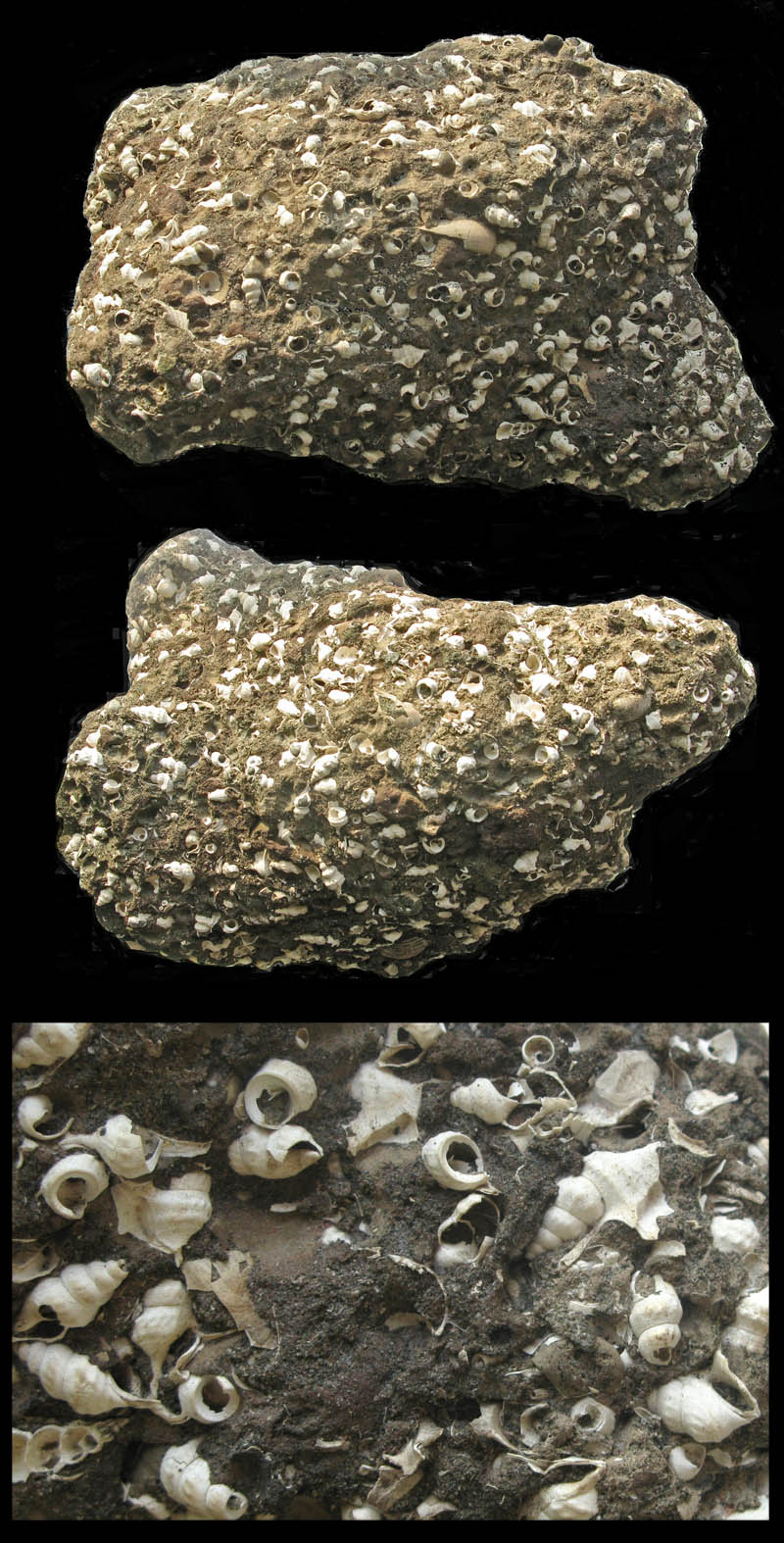
Aporrhais dingdenensis Marquet, Grigis & Landau, 2002; Miste bed, Breda Formation, Hemmoorian (Burdigalian-Langhian), middle Miocene; Miste-Winterswijk, Guelders Province, The Netherlands; Coll. Jaap van der Voort
from his collection
Digitolabrum princeps (Vasseur, 1881); Bartonian, Eocene; Bois-Gouet, Saffré, Loire-Atlantique Department, France; Coll. Jaap van der Voort
Persististrombus inflexus (Eichwald, 1830); loc. 13; 71 mm; tl: under UV light, others: colour variations of tl; Coll. & Photo Jaap van der Voort
Persististrombus inflexus (Eichwald, 1830); loc. 13; 71 mm; under UV light; Coll. & Photo Jaap van der Voort
Persististrombus inflexus (Eichwald, 1830); Protoconch; loc. 13; 71 mm; Coll. & Photo Jaap van der Voort
Aporrhais cf. dingdenensis Marquet, Grigis & Landau, 2002; Hemmoorian-Gramian? (Burdigalian-Langhian), middle Miocene; Tarmstedt near Bremen, Lower Saxony State, Germany; Coll. Jaap van der Voort
Aporrhais dingdenensis Marquet, Grigis & Landau, 2002; Hemmoorian-Gramian? (Burdigalian-Langhian), middle Miocene; Tarmstedt near Bremen, Lower Saxony State, Germany; Coll. Jaap van der Voort


